Neroli Perfume – Properties, Distillation, and History

Neroli – Citrus aurantium bigaradia
Neroli perfume is made from the essence or essential oil derived from the orange blossoms that are harvested from the bitter orange trees. The natural fragrance of these white flowers offers the pleasure of enjoying a pleasant aroma to a very few lucky people who truly love and choose natural perfumes of neroli.
The unique olfactory notes of orange flowers emanate distinctive floral and citrusy scents, making it one of the most used natural substances in natural perfumes.
It’s not only the scents that make neroli a favorite in perfumery historically but also the physical and mental health benefits of neroli essential oil beyond its evocative fragrances. Here we will explore more about neroli perfumes along with their properties, distillation, and history. So let’s get started.
Table of contents
Neroli perfume: Properties
Along with its evocative nature, neroli essential oil possesses many subtle medicinal properties that may include antioxidant, anti-inflammatory, anti-aging, antimicrobial, rejuvenating, and soothing among others, making it an ideal agent for aromatherapy with the ability to promote psychological wellbeing through alleviating anxiety and stress.
The natural scent of neroli can instill an earnest feeling of calmness, relaxation, and well-being on a more soulful level. In certain cultures, such as Chinese for example, it is believed that the scent of neroli has the capacity to enhance feelings of love and tranquility. For this reason, the uses of Neroli perfumes have been found deeply associated with romance. Perhaps this is the reason, as well as for the white color of its flowers, why neroli is symbolically used in weddings as a sign of purity, fertility, and moral virtue in traditional cultures.
Apart from diverse mental and psychological benefits, neroli has surprising physical benefits as well. The antioxidant effects of neroli can help protect the human body and brain from damages caused by free radicals and other environmental stressors such as air pollution and sun rays. It is widely used as a profound anti-aging ingredient to help reduce the appearance of aging such as fine lines and wrinkles on the skin.
Neroli essential oil can help reduce inflammation with its tremendous anti-inflammatory properties and may help with easing various inflammatory symptoms such as pain and sore muscles. As a potent natural stress reliever, aromatherapy clinicians widely recommend neroli oil to reduce migraines or headaches as well as for clearing sinuses in people who have a cold.
Neroli perfume: Distillation
In late April to early May, the orange flowers are harvested and gathered for extraction, usually by handpicking from the bitter orange tree, botanically known as Citrus aurantium bigaradia or amara. The essential oil of neroli used in perfumery is usually obtained through steam distillation or hydro distillation from the flowers of the trees. Though sometimes the oil is extracted through the method of solvent extraction or enfleurage.
Enfleurage is a process in which odorless fats are used to capture the fragrant compounds naturally exuded by the orange flowers. The process of enfleurage can be both “hot enfleurage” as well as “cold enfleurage”. Today, the method of enfleurage is rarely used to produce neroli essential oil because of the high costs.
The production of Neroli perfume oil is very limited and its costs are higher than many other perfume ingredients. Neroli oil is mainly produced in Morocco and Tunisia, supplying more than 90% of worldwide demand, making them the leading producers of neroli worldwide.
Neroli perfume: A brief history
Neroli essential oil has long been used throughout history since the ancient civilization of Egypt when Ancient Egyptians used it for spiritual, wellbeing, and health purposes. The bitter orange tree is assumed to have originated on the foot of the Himalayas and first introduced to Europe by Genoese travelers.
In the 10th century, the bitter orange tree arrived in Al-Andalus by the Arabs and it was set permanently in the Iberian Peninsula. Over the centuries, eventually, it became the emblematic tree of Andalusia, more specifically of Seville, which is why it is otherwise known as the Seville orange tree.
But it was in the 17th century when Neroli gained significant fame as a fashionable perfume. The orange blossom received its name “Neroli” from the Italian town of “Nerola” in honor of its Princess Anne Maria de la Tremoille who was famous for her nickname “Princess of La Nerola”.
This Italian Princess fell in love with bitter orange flowers and became obsessed with their freshness. She was the first person who made neroli essential oil through the distillation of orange flowers and soon it was developed as her favorite signature scent. With this precious essence of Neroli, she would perfume everything around her surroundings including her gloves, bathwater, clothes, and palace, and her high influence made neroli a fashionable perfume in the world.
Final words
Neroli perfume represents a surprising harmony of citrus and floral with unique hints of spices and honey although delicate, distinctive, and utterly refreshing. Neroli is one of the most widely used ingredients in natural perfumery. It tells a unique story, not only about each person who wears it but also about the long history of perfume.
The Neroli essential oil is widely used in aromatherapy for its prevalent ability to enhance mental as well as physical well-being. It may help relieve stress and anxiety and promote relaxation physically as well as mentally. It can also evoke deep feelings of love and romance which is why it is traditionally used in certain cultures at weddings to symbolize purity, virginity, and moral virtue.



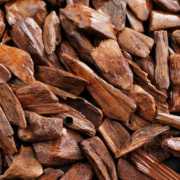
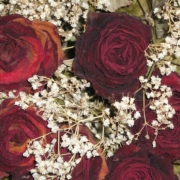
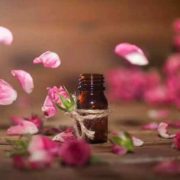

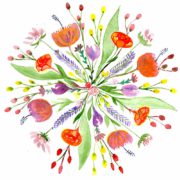
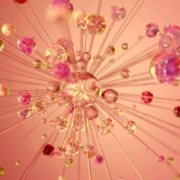















Leave a Reply
Want to join the discussion?Feel free to contribute!